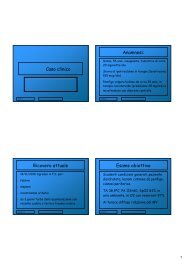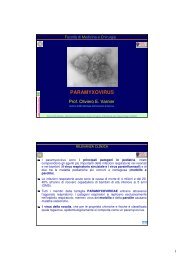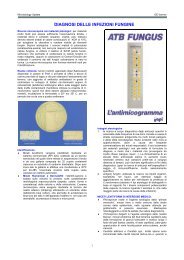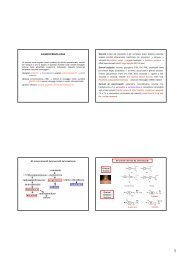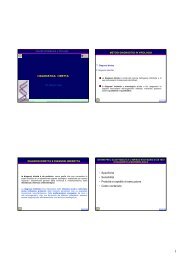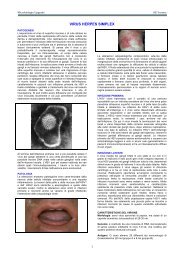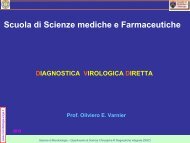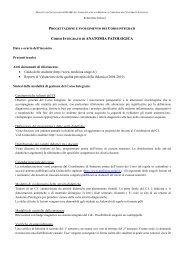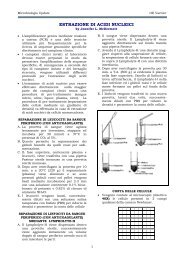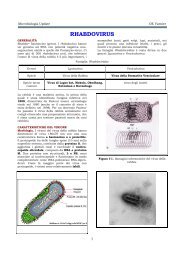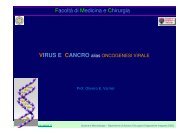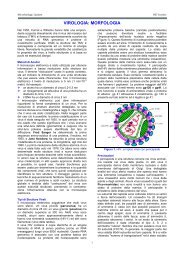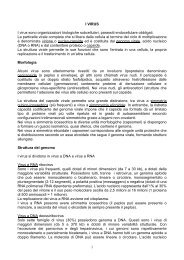CICLO REPLICATIVO - Sezione di Microbiologia
CICLO REPLICATIVO - Sezione di Microbiologia
CICLO REPLICATIVO - Sezione di Microbiologia
You also want an ePaper? Increase the reach of your titles
YUMPU automatically turns print PDFs into web optimized ePapers that Google loves.
Adsorbimento<br />
Le interazioni che gli antirecettori virali instaurano<br />
con i recettori presenti sulla cellula ospite sono <strong>di</strong><br />
tipo sterico.<br />
La complementarietà spaziale permette la formazione<br />
<strong>di</strong> un certo numero <strong>di</strong> legami deboli che, nel loro<br />
insieme, portano all’adsorbimento stabile del virione<br />
alla cellula.<br />
Affinché ciò avvenga, è necessario un ambiente<br />
abbastanza ricco <strong>di</strong> ioni capaci <strong>di</strong> neutralizzare le<br />
cariche <strong>di</strong> superficie delle strutture complementari, in<br />
modo da ridurne la repulsione elettrostatica.<br />
5<br />
ADSORBIMENTO<br />
L’adsorbimento è un processo in<strong>di</strong>pendente dalla<br />
temperatura e non richiede l’intervento <strong>di</strong> reazioni che<br />
producono energia.<br />
Per molti virus nu<strong>di</strong> questa fase rappresenta un processo<br />
irreversibile poiché causa, nella struttura del<br />
virione, delle alterazioni che fanno perdere al virus la<br />
sua capacità infettante: è fondamentale che al processo<br />
<strong>di</strong> adsorbimento segua la fase <strong>di</strong> penetrazione.<br />
6<br />
3





